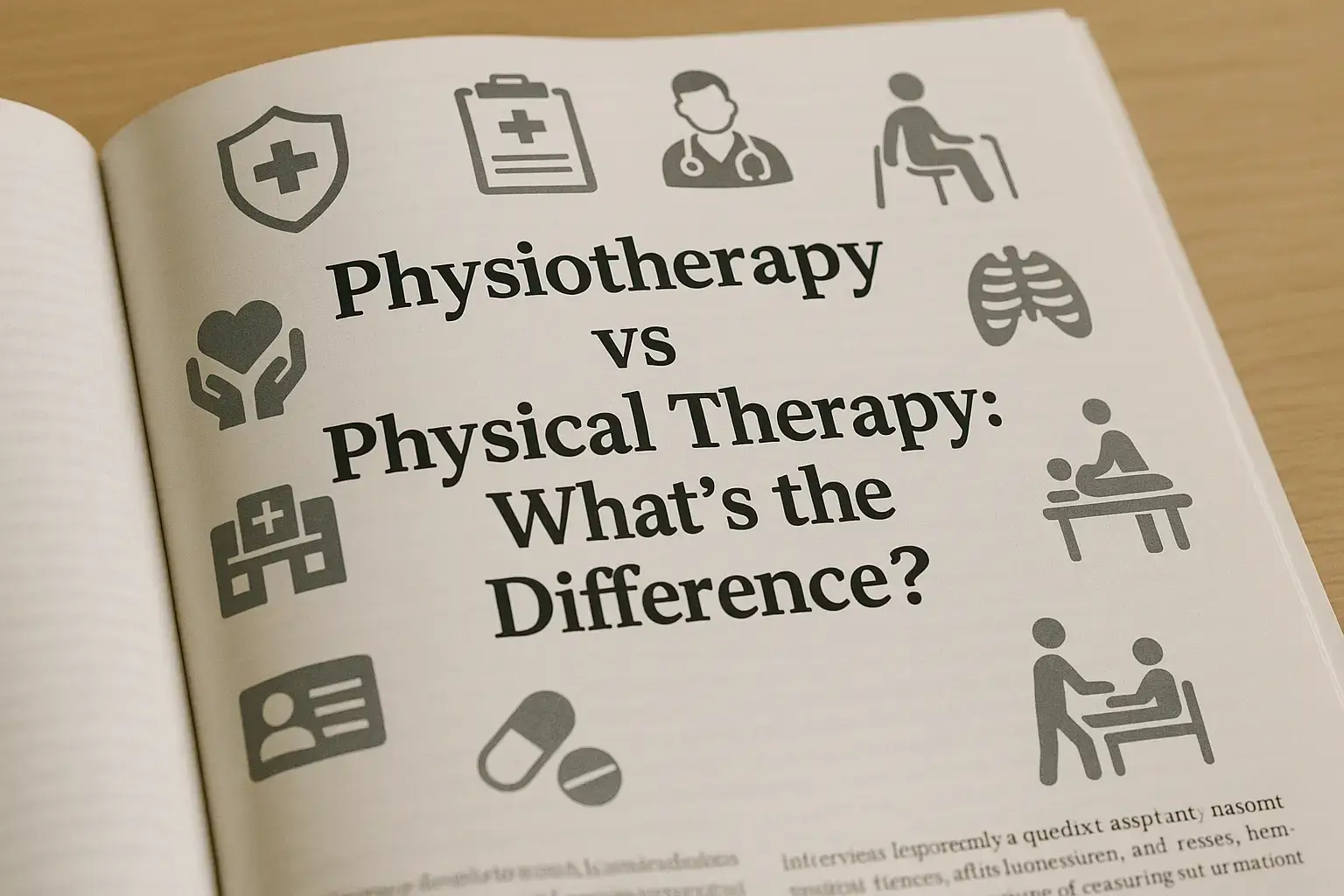Difference Between Physiotherapy and Physical Therapy
In Canada, the difference between physiotherapy and physical therapy is mostly a matter of language. Ultimately, both terms refer to the same quality of care and treatment.
We generally favor “physiotherapy” in these parts, though “physical therapy” is the term of choice in the United States. At Push Pounds Sports Medicine, we lean into both terms.
Our mission has always been to keep people moving well and getting out of pain or injury with effective, evidence based hands-on care.
What Are Physiotherapy and Physical Therapy?
Defining Physiotherapy in Canada
In Canada, physiotherapy is a highly regulated healthcare profession. Our physiotherapists are required to complete a minimum of seven years of post-secondary education and successfully complete national examinations. They employ hands-on techniques such as soft tissue manipulation, stretching, and massage to alleviate pain, stiffness, and immobility.
Their scope of practice ranges from care for small children, the geriatric population, athletes, individuals with lung or heart disease, disability, pelvic health, and so forth. As an evidence-based practice, we believe in only providing the treatments that are proven to work through rigorous research.
Patient-centered to the core, our commitment is to our patients first and foremost. We develop customized plans that fit with actual lives, aspirations, and requirements. Our team works together with physicians and other health providers to provide the best possible results.
Defining Physical Therapy Globally
Internationally, “physical therapy” is the prevalent term, including in the United States, United Kingdom, and beyond. Their standards and practices are usually very similar to what we practice in Canada, with some local flavour. Physical therapist education typically spans four or more years.
In the US, this means they must earn a Doctor of Physical Therapy degree. The ultimate goal everywhere is universal – to keep people moving freely, reduce their pain and improve their overall health. Whether in Australia, Europe, or Toronto, the integrated care provided through physiotherapists’ expertise addresses pain, fatigue, mobility, and other concerns.
While the hands-on techniques, traditional education, and patient-centered care may ring similar across countries, the language we use varies greatly.
Historical Roots Shaping the Terms
Both of these fields have extensive, historical roots. Rehab definitely has ancient roots, going back thousands of years. Wars, polio, and the wish to heal better after injuries have contributed to the early forms of it.
As the fields expanded, various names were adopted across various locations. Influential leaders and happenings, such as the polio epidemic, were foundational in establishing formal criteria. Cultural influences and indigenous languages determined which term each state uses now.
Why the Two Names Exist
This division between “physiotherapy” and “physical therapy” is indicative of local customs, legacy, and professional organizational power. National associations in each country are responsible for establishing the language.
Regardless of the two names, their work and the outcomes they produce are identical. Outcomes – helping people move better and feel less pain – should not be different simply based on what we choose to call the care.

The Big Question: Spotting the Difference
1. Terminology: A Canadian Perspective
In Canada, we use the term “physiotherapy” much more frequently than the term physical therapy. Our healthcare system is based on regulated health professionals. They need to live up to specific standards set by bodies like the Canadian Physiotherapy Association.
These standards help determine what patients can expect from care and they help create that consistent high quality of care across the nation. The language used to describe the term influenced public perception of the profession. Many Canadians are looking for a hands-on, personalized approach when they request physiotherapy.
2. Training and Education Pathways
To become a physiotherapist in Canada, you require a bachelor’s degree, then a master’s in physiotherapy. In the U.S., physical therapists now usually are required to earn a doctoral degree. Clinical experience makes up an important aspect of both routes, allowing future therapists to gain hands-on experience with patients before they graduate.
Continuing education – required in both industries – is another big difference. It ensures that practitioners are aware of the most recent advances in research and allows them to cultivate new skills.
3. Licensing and Regulation Across Provinces
Licensing in Canada is onerous. Each province operates its own regulatory board, which certifies therapists according to local standards before they are licensed to practice. These regulations ensure that patients are safe and that care is safe and standardized, in Toronto or any other part of the country.
4. Core Treatment Philosophies Compared
Physiotherapy in Canada usually focuses on manual therapy – hands-on techniques, soft tissue work, stretching. Physical therapy, particularly in the U.S., tends to focus more on developing exercise regimens and movement retraining.
Both strategies place high importance on engaging patients as active participants and ultimately on achieving optimal recovery.
5. Practical Day-to-Day Approaches
Our physiotherapists do action in hospitals, clinics, gyms, and sports centers. They customize their care – from manual releases to exercise regimen – according to each patient’s individual needs.
Physical therapists can perform similar tasks, but their practical day-to-day might involve more group sessions or rehab classes. In either instance, the care they receive is individualized and purpose-focused.
6. My Take: Is There a Real Difference Here?
In reality, there’s not much difference between the two. It’s not the modality that matters, it’s the individual therapist’s skill and fit. Whoever you choose, focus more on their understanding of your vision and ability to work with you than on the title.
7. How Public Perception Varies
Nearly all Canadians see physiotherapy as a backbone of rehab. Often media and word of mouth mix them up, creating a situation where neither side is quite sure what the other profession is responsible for.
So clear communication on our end as providers, because that’s what we are – we’re providers – about the risks is critical in helping people make informed decisions.

